“I don’t like the look of those clouds,” said Alison, as we made our way beside Torside Clough onto the plateau expanse of Shelf Moor, an icy north-easterly wind picking up the spindrift of the overnight snowfall and whipping it against our faces.
“We’ll head for the Wain Stones at Bleaklow Head,” I suggested, “we might get a little shelter there.”
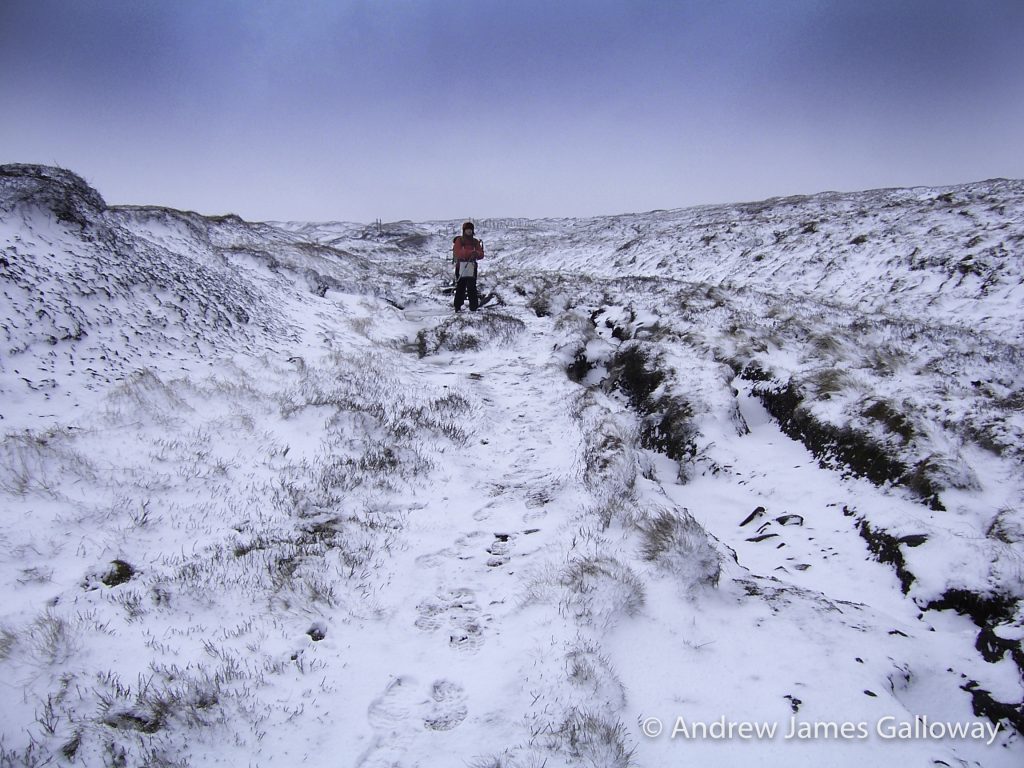
Alison’s meteorological prediction was correct. As the black clouds pressed down on the featherbed heather of Bleaklow Hill, they gave up their cargo of ice crystals in abundance. Carried along by the same northeasterly wind a wall of white soon bleached the sky and moorland of any contrast and within minutes where there had been clearly distinguishable shapes, there was only whiteout.
“We best get the emergency shelter out,” I suggested. Alison, daughter of a Malpas farmer and raised to the harsh conditions of the farming calendar gave me a look far colder than the blizzard which now engulfed us.
“Behind the stones will be fine,” she shouted above the now howling wind. We crouched down in the few metres of relief from the wind that the kissing gritstone gave and searched for the hot chocolate hidden somewhere in our rucksacks.
Boom! And then again, Boom!
From the south the heart stopping sound of explosion fell through the cloud with oppressive weight. “What the hell was that? It sounds like they are dropping bombs over there.”
“I don’t know,” said Alison, “but I don’t think we should stick around to find out.”
“It could be thunder,” I suggested, “but I’ve never heard thunder like that. And we’re at the highest point here. Not a good idea in a storm. We’d best get to lower ground.” But the Pennine Way, elusive at the best of times on Bleaklow Hill, had vanished into a chiaroscuro landscape of black peat groughs and white snowdrifts glimpsed briefly through the brief respite of the spindrift swirling around us.
“We’ll have to do this on compass,” I said.
I took a bearing to the north-east and began to pace out the three-hundred metres to where, as indicated by the map, our intended path turned northwards, but the undulations of the peat groughs, the eye stinging snow and the rapidly deepening snowdrifts made the going almost impossible. The cairn that indicated the swing in the Pennine Way to the north was lost somewhere between the rough white landscape and the bleached white sky.
“I think we’re lost,” I shouted to Alison above the wind.
“We can’t be,” insisted Alison.
I suggested we retrace our steps on a back bearing to Bleaklow Head, but that wasn’t going to get us off the moor, or down to lower ground. Instead we decided to head out north from our current position, the logic being that ultimately we would descend into the Woodhead Pass. Staggering north through the biting wind, we eventually reached a wire fence transecting our path, which, for no other reason than it being the only distinguishable feature since leaving the cairn at Bleaklow Head, we elected to follow it to the west, which thankfully, turned out to be a good decision as it led directly into Wildboar Grain from whence we had originally come.
Even the harshest winter will give way to snowdrops and catkin-tails, so spring once again took it’s fecund hold over the Derbyshire hills and I was keen to return to Bleaklow Hill to retrace navigationally challenging steps and to explore what I knew to be up there on the sandy soils of the gritstone plateaux and what had been eating away at my imagination since Alison and I had heard the sounds of explosion in that blizzard.
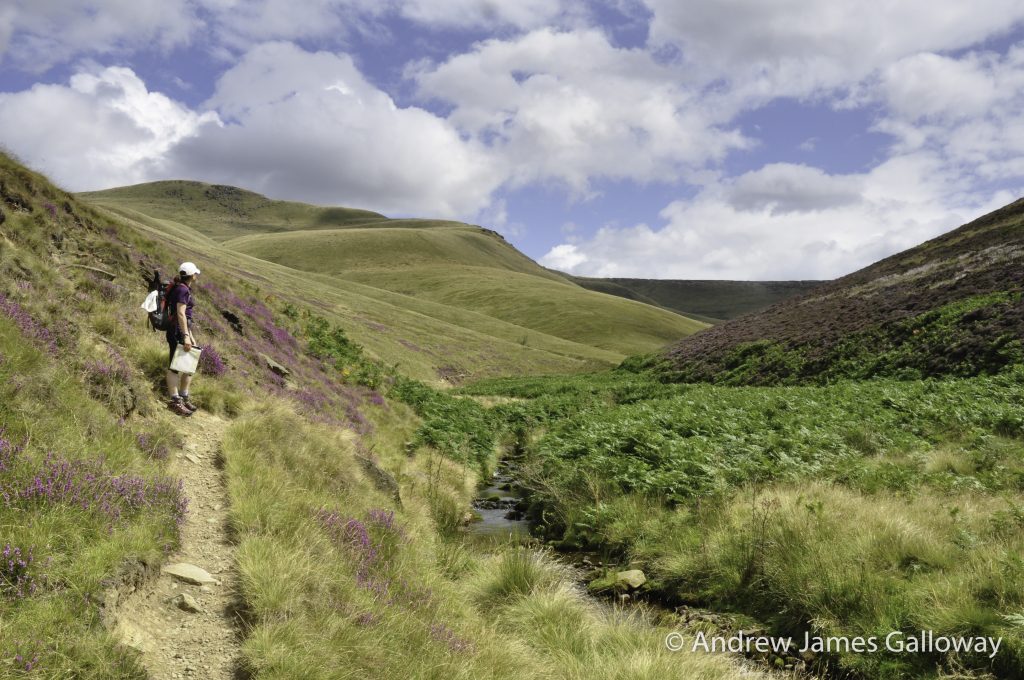
On this occasion Allison (same name, spelt with two l’s, different person) and I approached from Glossop along the course of Doctor’s Gate, the old Roman route across the Snake Pass, the precipitous cloughs sweeping down from the high moorland making one of the most dramatic landscapes in the Dark Peak. The magnificent re-entrants slicing through the Namurian millstone grit proved too tempting and so we crossed Shelf Brook and began to scramble up Ashton Clough. We had not climbed far when we stumbled upon the first evidence of what I had been expecting to find. A hunk of silver metal, possibly some type of steel, about a metre in diameter and very badly weathered was sitting in the centre of the small stream that falls from Ashton Clough, its once moving parts petrified by decades of rust.
Sure enough, another fifty metres higher, now half buried by soil, we found what was still just discernable as the fuselage of an aircraft. The skeleton of this airframe was thin and flimsy, constructed of aluminium alloy. This cocoon like relic was the remains of a C-47 Dakota aircraft operated by the 314thTroop Carrier Group, which crashed on 24thJuly 1945 on Shelf Moor. Over the course of seventy years parts of the aircraft, including this section of the rear fuselage, have been moved down slope into Ashton Clough. Alan L. Clark, author of a walkers guide to aircraft wrecks in the British Isles, reports that the aircraft was on a transport sortie from Poix, near Amiens, northern France to Renfrew (now Glasgow airport) but failed to arrive at destination. All five crewmembers and two passenger were killed. The official USAAF report on the accident blamed low cloud.
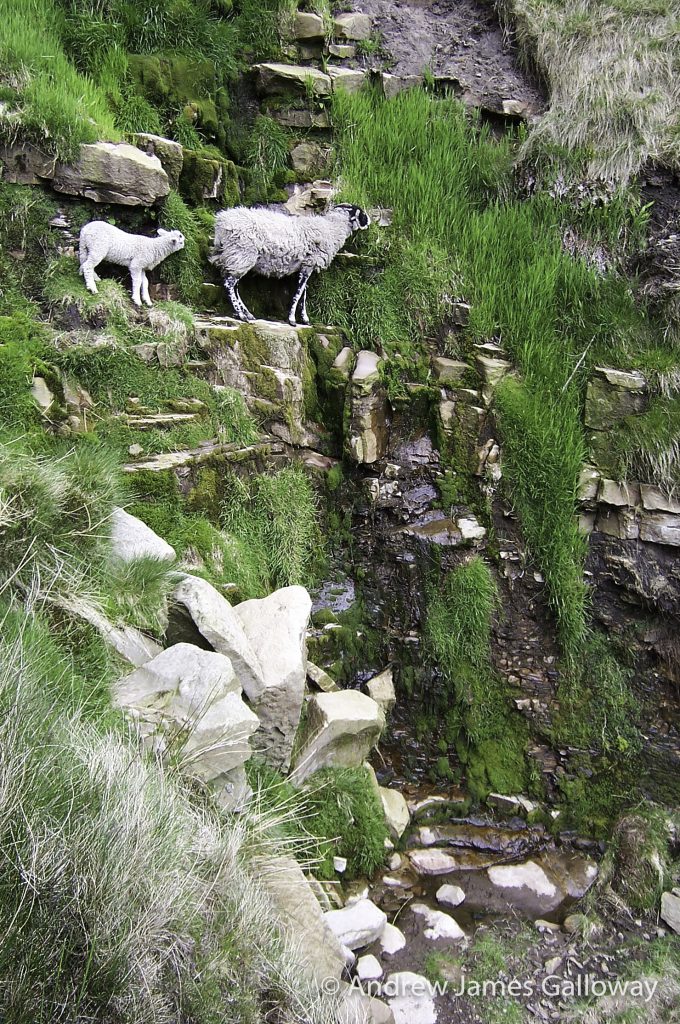
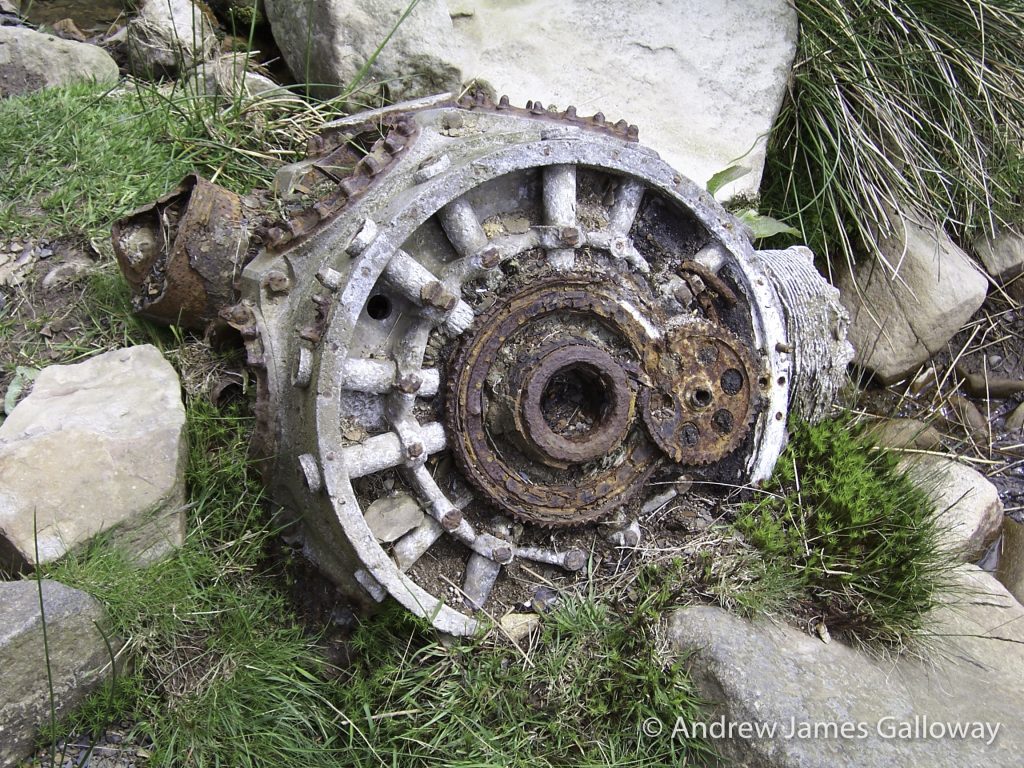
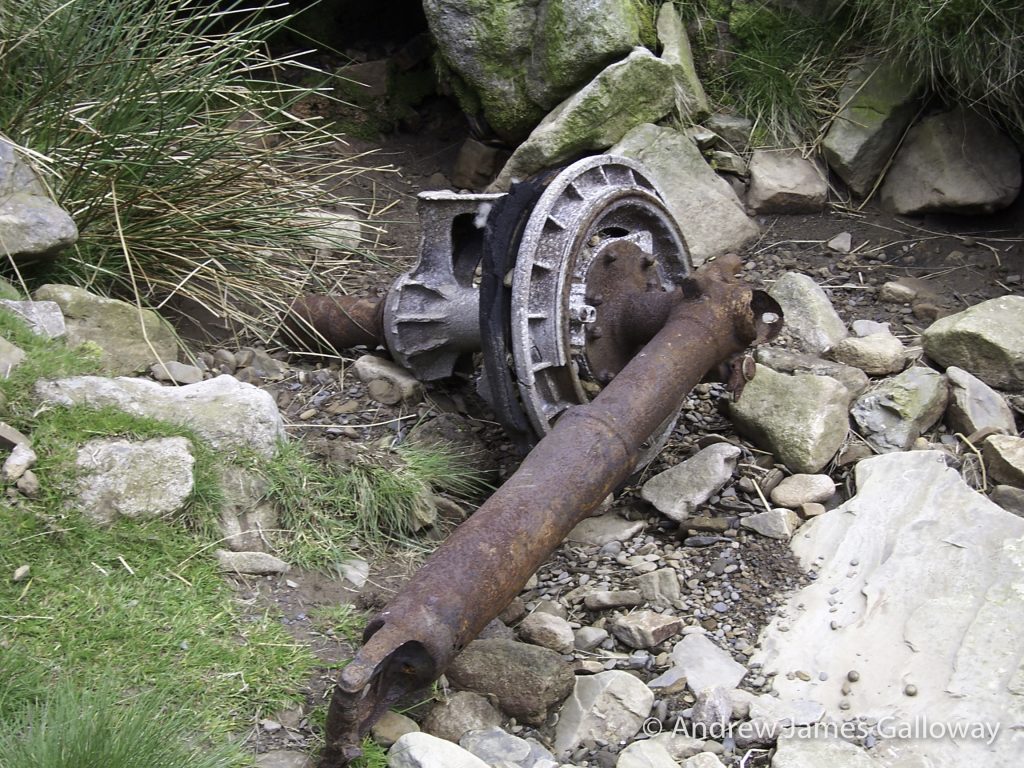
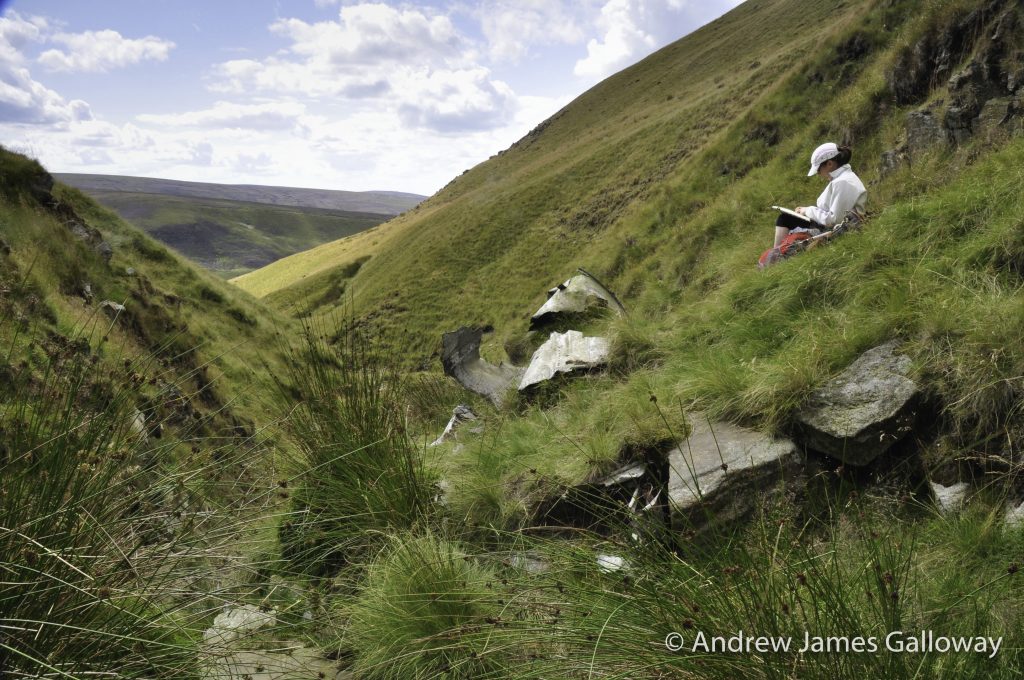
USAAF C-47 Dakota crash site at the top of Ashton Clough
At its steepest point, in situ gritstone causing the little stream of water to tumble in pleasant cascade, Ashton Clough suddenly pops out onto Shelf Moor below James’s Thorn and the full unsheltered expanse of the Bleaklow plateau becomes visible (in good weather that is). Allison wishing to practice some navigation skills suggested we ‘leap-frogged’ our way over to the trig-point at Higher Shelf Stones. The navigation technique of ‘leap-frogging’ can be used in restricted visibility, such as in low cloud or at night whereby two or more people can use each other as reference points from which to correct a directional bearing.
Just a few hundred metres north of the trig-point we found the first piece of twisted aluminium lying against the black peat, shining in the sun as if it were newly cast, while in fact it had lain here, high upon the moor, for seventy years.
It can take a little while to orientate yourself over the expanse of wreckage spread out over a hundred square metres, but eventually the fragments of an aeroplane begin to knit together to form a whole: engines first, four of them, then undercarriage, wings, tail-plane, and then you think of the crew. This USAF Boeing RB-29 known as “over-exposed” on 3rd November 1948 was taking payroll and mail from Scampton in Lincolnshire to Burtonwood near Warrington, once one of the largest USAF supply bases in the UK. Due to poor weather conditions the flight was being conducted on instruments, the pilots effectively flying blind. It is thought that due to a navigational error the captain understood his position to be further to the west than it actually was and began to descend on the approach into Burtonwood too early, with disastrous consequences. All thirteen crewmembers were killed.
It is perhaps difficult to imagine in todays age of computer assisted flight and instrumental landing systems, but the vast majority of wartime aircraft did not carry on-board radar and did not have pressurised cabins. This meant high altitude flight was often not an option and that navigation in poor visibility could only be achieved by a process using compass bearing, airspeed indicator and stopwatch, a type of aeronautical Naismith’s Rule. As a consequence, errors were common. The high ground of Britain, in particular the Peak District is littered with such tragic sites.
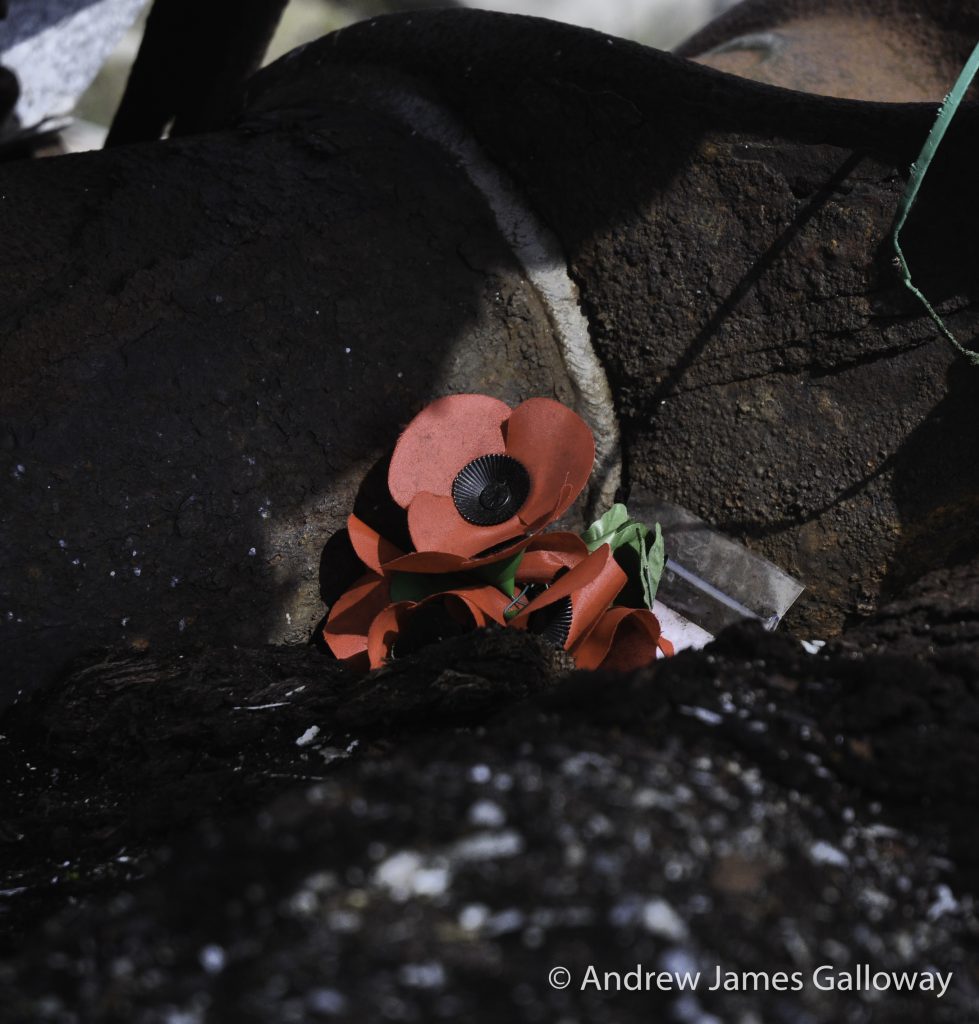
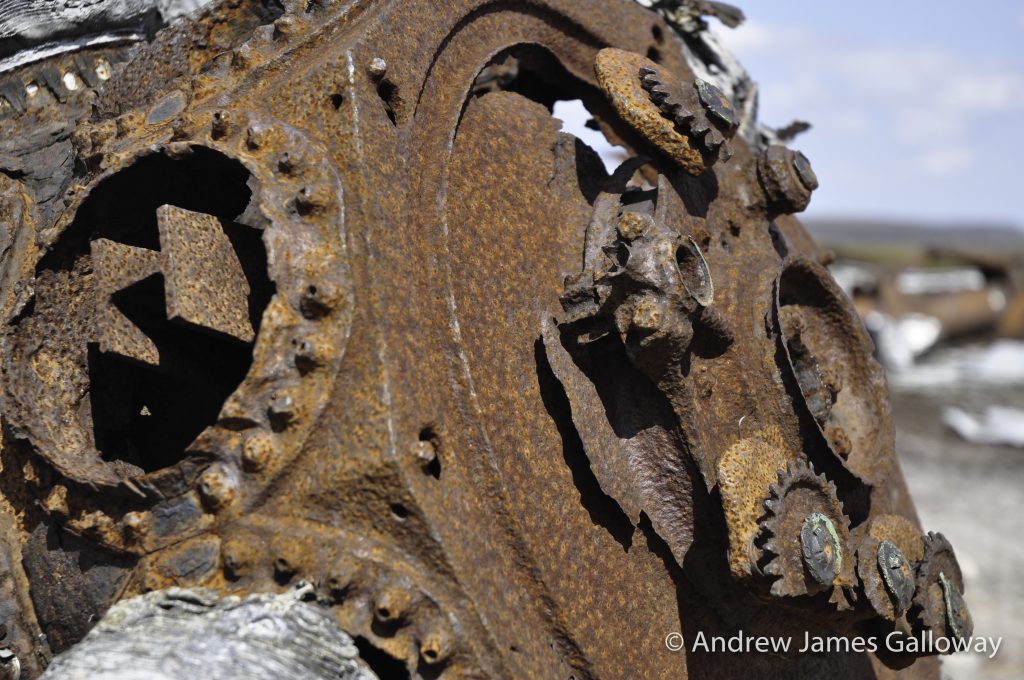
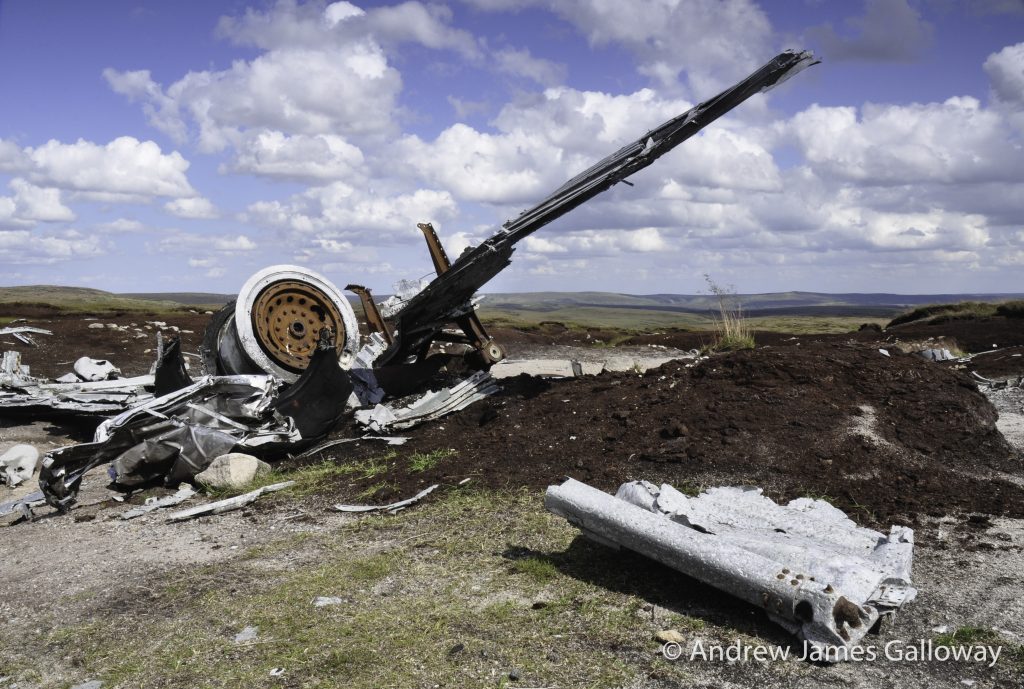
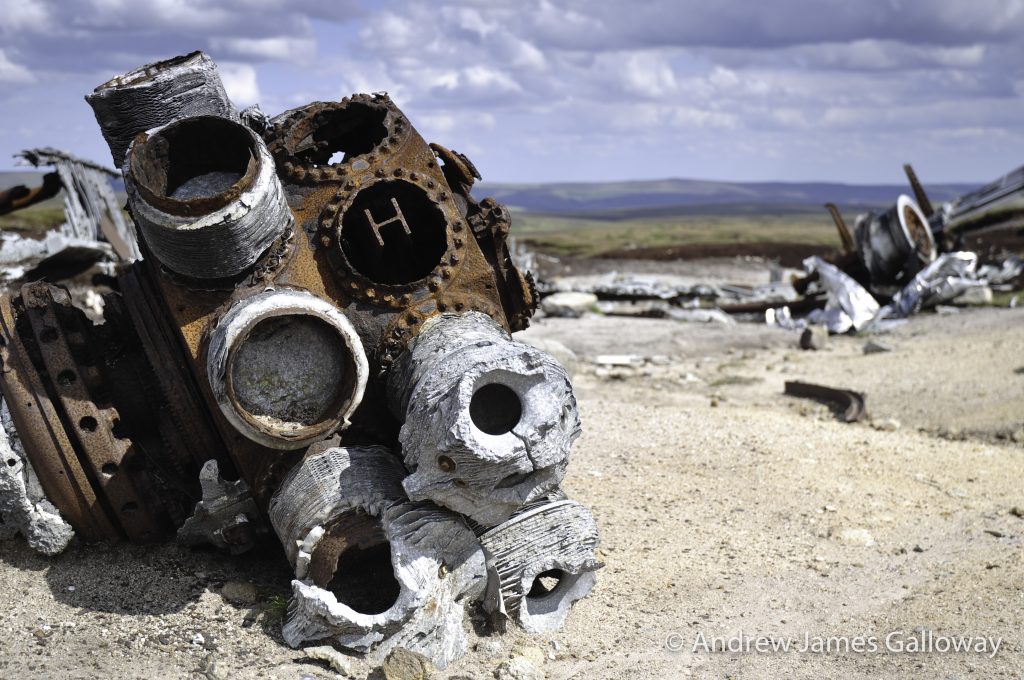
USAF Boeing RB-29 “over-exposed” crash site on Higher Shelf Stones
Unsurprisingly, a modern mythology has grown up around the area. There are tales of phantom aeroplanes and ghostly apparitions. Gerald Scarratt of Longdendale, whilst exploring the RB-29 crash site discovered what he thought to be a washer, but on later inspection found to the gold ring belonging to the aircraft’s captain Langdon P. Tanner. Returning to the site with a group of aircraft enthusiasts, Gerald was recounting his tale when his companions turned ashen faced and began to walk away from the site. They later claimed to have seen a pilot in full post-war flying gear standing behind Gerald, although Gerald himself remembers seeing nothing of the sort.
The reservoir cascade of Howden, Derwent and Ladybower were famously used during the second world war as practice locations for the attack on the dams of the Ruhr Valley in western Germany by the specially adapted Lancaster bombers of the 617 Squadron, now more commonly known as the Dambusters. Something has undoubtedly become lodged in the collective unconscious and folk memory of that part of the Peak District. Urban myths of plane crashes and ghost aircraft about.
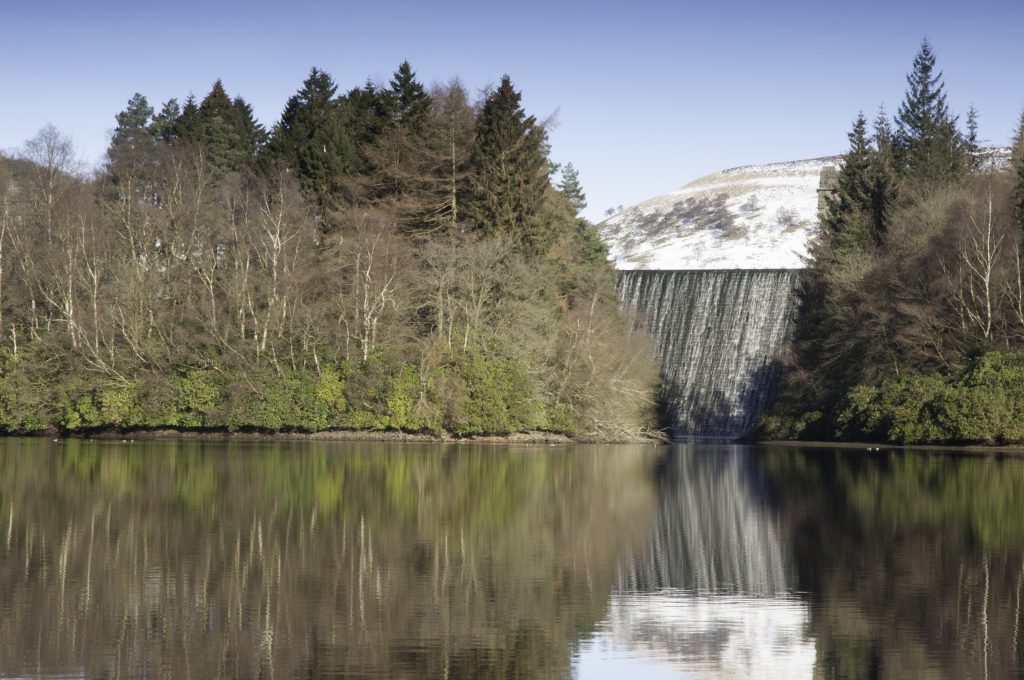
Dr. David Clarke of Sheffield Hallam University has recorded the tale of how on 24thMarch 1997, police in the Dark Peak area received calls from various members of the public, including a special constable and two gamekeepers, claiming to have witnessed an aircraft crashing into the moors above Howden Reservoir. Taking the calls seriously, the police alerted the local Mountain Rescue Team, but despite a widespread search, no evidence of any crash could be found.
And what of my own experience? The sound of explosion heard by Alison and myself above the wind at the Wain Stones on that icy cold day. Of course, it could have simply been thunder (but it didn’t sound like thunder) or some other meteorological phenomenon. Or perhaps we heard the sound, somehow transmitted across the decades, of that fateful accident in 1948 when thirteen young airmen lost their lives.
On Higher Shelf Stones, the sense of pathos is tangible. Here and there people have placed small wooden crosses and silk poppies, which stand out white and red against the silver-grey of the weathered wreckage and the monochrome pallet of the exposed peat hags, a reminder of the young men who’s sense of duty led them to a cold, windswept moorland in an unfamiliar country.

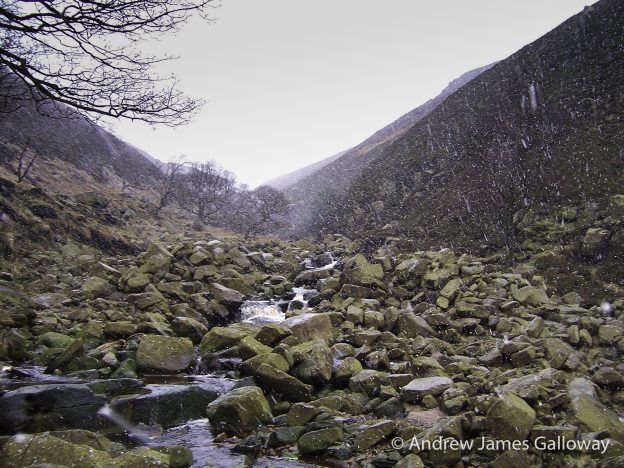
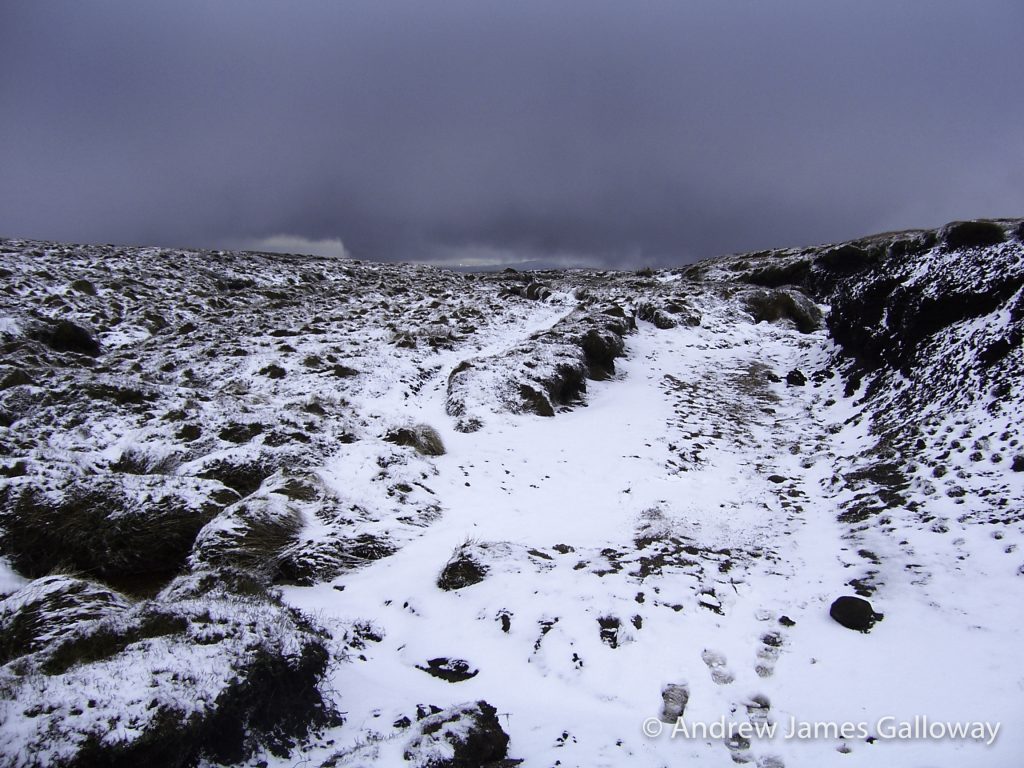
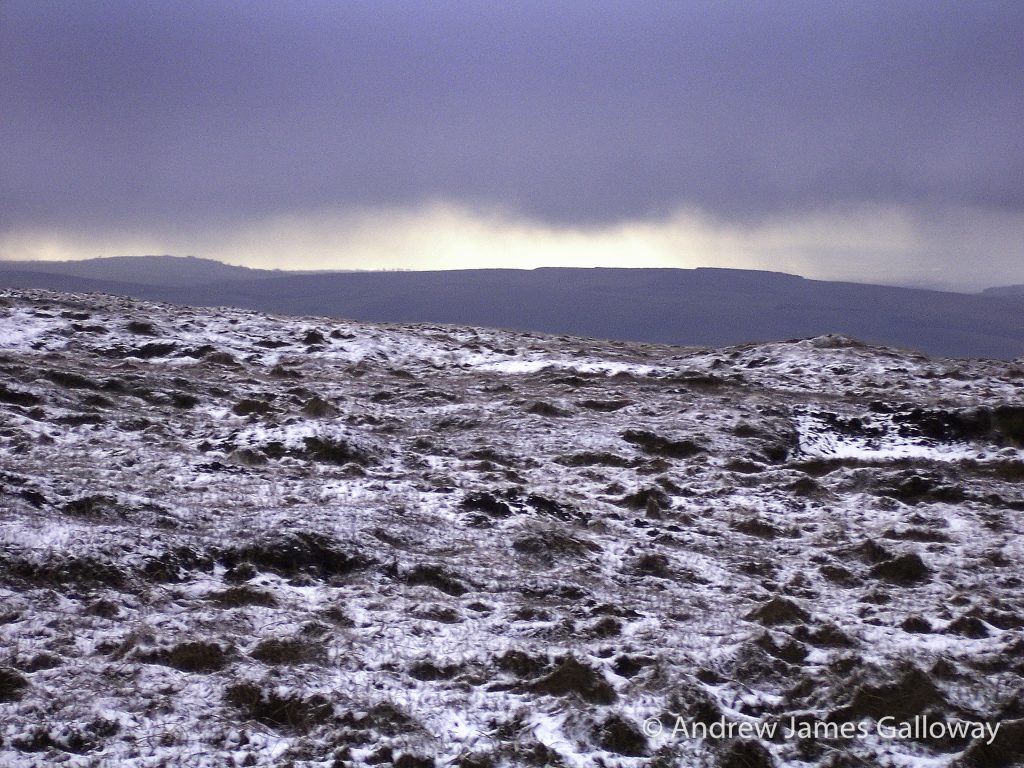
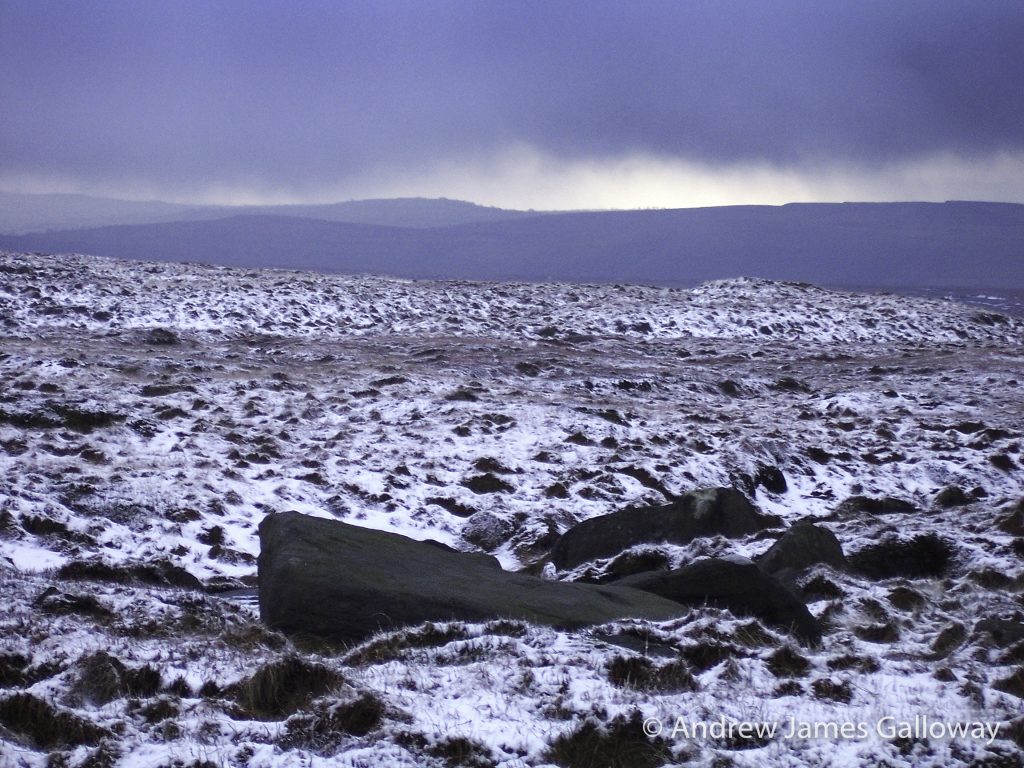
I thoroughly enjoyed reading this. Thank you. I live in Hadfield (14 years now) and regularly run up Doctor’s Gate over Bleaklow etc.
Something I don’t often mention is that I was up there running on a beautiful blue-sky day a few years ago; the first time I had tried running up Doctor’s Gate.
I was heading over the fells when on my right I heard a car crash through a metal gate … scared the life out of me! ?
But there was nothing there? No gates, no tracks, no possible explanation?
Luckily I was tracking my run with gps. I told my wife what had happened but just thought it strange. To cut a long story short I was around 100 metres from the B29 Crash site and heard the crash directly from that direction.
I ran up there again and found the crash site … literally by going in a straight line from where I heard the crash. It turned out I heard the crash at the exact time they are thought to have crashed.
I had no idea I was anywhere in that area at the time.
I’m not even a believer in ghosts but I cannot explain this (I’m also ex-raf), so who knows what I heard?
Anyway, thought I’d share this with you. I’m on Instagram @highpeaktrails if you fancy connecting. ?
Thanks again.
Pete
Hi Pete, that is indeed really interesting. I’d love to connect but I’m not on Instagram (at the moment). You can find me on Facebook at https://www.facebook.com/shutlingsloe